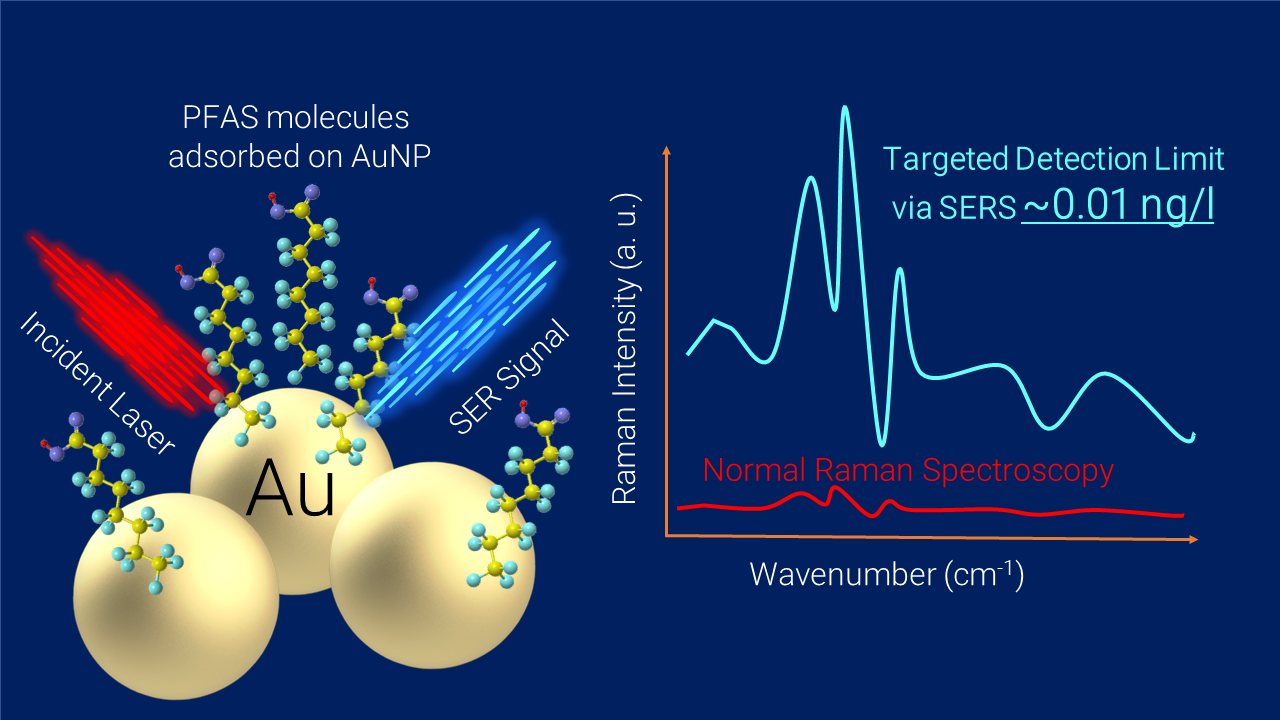
Do YOU know the TOXFOX Study? Per- and polyfluoroalkyl substances (PFAS) are persistent environmental pollutants found in drinking water and natural water bodies. In Berlin the tested tape water is contaminated with 520 ng/l with trifluoroacetic acid. Even at extremely low concentrations—measured in parts per trillion—they can pose significant health risks. Detecting PFAS at these levels is challenging with traditional methods, which often require costly instruments like HPLC and long analysis times. This project explores the use of Surface-Enhanced Raman Spectroscopy (SERS) for ultra-sensitive, rapid detection of PFAS. By designing and optimizing nanostructured metallic substrates, and combining them with preconcentration techniques, the aim is to achieve detection limits in the ng/L range. Depending on your interest and available time, the project can focus on substrate fabrication, signal enhancement strategies, sample preparation, or data analysis using chemometrics/machine learning.
Scope of Work (Adaptable to Duration & Background)
- Literature review on PFAS detection methods and SERS fundamentals.
- Design & fabrication of SERS-active substrates (e.g., silver nanostructures, gold-coated nanoparticles, flexible SERS films).
- Surface functionalization for selective PFAS binding.
- Sample preparation and preconcentration from water matrices (optional for shorter projects; in-depth for longer theses).
- Raman measurements of model PFAS (PFOS, PFOA) at varying concentrations and conditions.
- Matrix effect studies (tap water, river water, wastewater).
- Data processing and chemometric analysis for improved signal-to-noise and detection limits.
- Comparison with regulatory limits (EPA, EU) and feasibility assessment for real-world monitoring.
- Optional extended work: Integration of SERS detection into a portable platform for field testing.





Do YOU know the TOXFOX Study? Per- and polyfluoroalkyl substances (PFAS) are persistent environmental pollutants found in drinking water and natural water bodies. In Berlin the tested tape water is contaminated with 520 ng/l with trifluoroacetic acid. Even at extremely low concentrations—measured in parts per trillion—they can pose significant health risks. Detecting PFAS at these levels is challenging with traditional methods, which often require costly instruments like HPLC and long analysis times. This project explores the use of Surface-Enhanced Raman Spectroscopy (SERS) for ultra-sensitive, rapid detection of PFAS. By designing and optimizing nanostructured metallic substrates, and combining them with preconcentration techniques, the aim is to achieve detection limits in the ng/L range. Depending on your interest and available time, the project can focus on substrate fabrication, signal enhancement strategies, sample preparation, or data analysis using chemometrics/machine learning.
Scope of Work (Adaptable to Duration & Background)
- Literature review on PFAS detection methods and SERS fundamentals.
- Design & fabrication of SERS-active substrates (e.g., silver nanostructures, gold-coated nanoparticles, flexible SERS films).
- Surface functionalization for selective PFAS binding.
- Sample preparation and preconcentration from water matrices (optional for shorter projects; in-depth for longer theses).
- Raman measurements of model PFAS (PFOS, PFOA) at varying concentrations and conditions.
- Matrix effect studies (tap water, river water, wastewater).
- Data processing and chemometric analysis for improved signal-to-noise and detection limits.
- Comparison with regulatory limits (EPA, EU) and feasibility assessment for real-world monitoring.
- Optional extended work: Integration of SERS detection into a portable platform for field testing.



